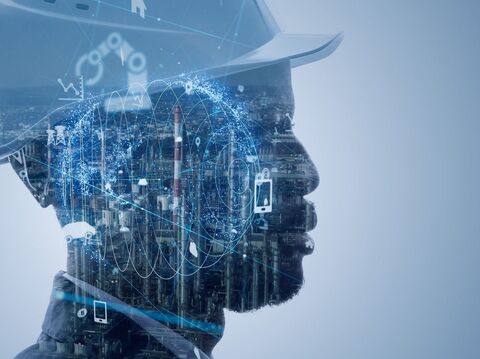AI in Action: Top 10 AI Case Studies for Business Growth

Businesses nowadays are using AI to increase their sales, reduce costs and improve customer experience. Today, AI tools are delivering real business results like predicting what customers will buy next, and spotting equipment problems before they happen.
This blog discusses 10 successful companies using AI to solve daily business challenges. These case studies come from industries such as retail, manufacturing, and banking. They showcase how AI turns data into practical solutions, like providing faster customer service.
Case Study 1: AI in Retail – Personalised Customer Experiences
-
Problem
Major retailers like Walmart and Target AI case study have been unable to beat Amazon's personalised customer shopping experience. Their systems were only able to keep track of the history of purchases. They could not trace customer behaviour patterns, including shopping preferences.
-
Solution
Amazon's AI case study combines several customer actions. For example, if you are reading a review of hiking boots, then it will show you relevant outdoor equipment. It might be sleeping bags and portable stoves that hiking enthusiasts buy.
-
Results
The AI-based recommendations by Amazon account for 35% of sales. Their net sales in Q1 2023 were $127 billion[1]. In 2024, they also stood at $143 billion for the same quarter.
Case Study 2: AI-Driven Marketing Optimisation
-
Problem
Coca-Cola struggled to reach all segments of customers in global markets. Traditional marketing practices couldn't help them with personalisation campaigns at the global level.
-
Solution
Coca-Cola adapted AI powered tools like social media analytics and machine learning to understand how customers interected with their brand online. The tools analysed customer preferences, engagement patterns, and activity times on social media platforms like instagram and facebook.
-
Result
Coca-Cola's AI now utilises this data to show the right ads at the right time and on the right platform. They're running refreshment ads on Instagram when teen followers are most active. This targeting cut ad spend but drove up engagement.
Case Study 3: Predictive Maintenance in Manufacturing with AI
-
Problem
Siemens lost $2 million every day due to unscheduled machine breakdowns. These breakdowns disrupted production, and halted the work of all production lines. It made workers lazy, and the company missed several deadlines.
-
Solution
Siemens installed smart sensors on critical equipment to monitor parameters like temperature, vibration, and performance 24/7. Then, AI systems analyse the sensor data to spot potential warnings or failures. This help the company schedule repairs before potential issues come up.
-
Result
Seimens AI case study showcase how it achieved a 25% reduction in power outages at plants, saving millions annually. The AI systems minimised costly production halts, saving $750 million per year[2] and improving operational efficiency across plants.
Case Study 4: AI in Financial Services – Fraud Detection and Prevention
-
Problem
PayPal's old fraud detection system caused it to lose customers. It took too long for the suspicious transactions to get checked, often even mistaking them for real purchases. This frustrated customers, making them switch the platform.
-
Solution
PayPal's AI system now analyses several data points in each transaction. This includes location, device, shopping habits, and purchase amount. It quickly spots unusual patterns like large purchases from another country.
AI does all of this in milliseconds, while human analysts would need hours to review the same information.
-
Result
The new system approves genuine transactions instantly. It also confirms authentic purchases in milliseconds. It immediately flags suspicious activity for review. This way, business and customers' money is protected, and the payment experience is simplified.
Case Study 5: AI for Improved Healthcare Diagnostics
-
Problem
It took eye doctors at Moorfields Hospital a long time to scan over 1,000 eyes. Patients with treatable eye conditions were also at the risk of losing their vision due to long waits.
-
Solution
DeepMind collaborated with the hospital to develop an AI that reads eye scans. It analyses each scan to detect possible problems. These could include muscular degeneration or diabetic retinopathy. AI then notifies the doctors which patients need urgent treatment.
-
Results
This AI case study proves how AI diagnoses eye diseases with an accuracy of 94%[3]. It scans thousands of eyes each week, quicker than the human doctor. Through this, patients with treatable conditions get help before permanent vision loss.
Case Study 6: AI in Logistics and Supply Chain Optimization
-
Problem
DHL's delivery drivers struggled with unpredictable challenges every day. Traffic delays cost hours of drive time. Unexpected order surges resulted in late deliveries. This happened due to a lack of trucks and the mishandling of all packages.
-
Solution
DHL developed an AI system that watches traffic patterns, weather changes, and customer ordering habits. It plots the best delivery routes and tells DHL exactly how many drivers and trucks they'll need that day. AI also suggests the fastest ways to load trucks based on delivery orders.
-
Result
Drivers complete routes more quickly on clearer roads. Trucks also carry the correct amount of packages. This plan allows DHL to deliver more packages on time and with less fuel consumption.
Case Study 7: AI in Human Resources – Recruitment and Talent Management
-
Problem
The HR team of LinkedIn and Eightfold was facing typical recruitment problems. They had to scan thousands of resumes to find the right applicants. It took too long, and they often missed the right candidates.
-
Solution
AI tools scan resumes much quicker than the eye of a human. Besides scanning keywords, it scans actual skills and potentials. It matches people to jobs based on actual abilities. The system also automates tasks like scheduling interviews and initial candidate screening.
-
Result
LinkedIn's AI cuts hiring time in half. Eightfold AI’s talent intelligence system finds 42% more qualified candidates[4] and fills positions 26% faster.
Case Study 8: AI-Powered Chatbots and Customer Support Solutions
-
Problem
H&M's users needed help with various sizes and product-related inquiries at all hours. This requirement was a bit hard for human agents to fill.
-
Solution
H&M has come up with AI chatbots that answer questions about its products. It recommends sizes to customers based on their previous purchases. This ensures customers order the right pair of clothes.
AI also checks if things are available in stock. It hears customer questions in everyday language and answers promptly.
-
Results
Customers get instant help without waiting for human agents to come online. Teams can focus on dealing with more complex issues like order tracking or processing refunds.
The bot provides faster and more accurate product information, helping customers make informed purchasing decisions.
Case Study 9: AI for Data-Driven Business Insights and Analytics
-
Problem
Tableau faced the problem of processing large amounts of information. Several companies carried valuable data that they could not turn into useful insights quickly. This slowed the decision-making process.
-
Solution
Tableau provides AI tools that scan an organisation's data. From the collected data, one can identify patterns and trends that hit the organisation. The data is also presented simply to help the team make better decisions.
-
Results
Companies using Tableau's AI tools now realise market changes and business opportunities that were usually missed before. Teams can better understand complex data and make timely decisions, thus increasing the pace of business growth.
Case Study 10: AI in Content Creation and Automation
-
Problem
Without AI in marketing departments, companies were overworking. They managed numerous blogs, social posts, and emails that had to be written. There was barely enough time left to do the strategic work.
-
Solution
OpenAI's models provided new ways of writing content and creating original ideas. It designs strong marketing messages and develops a creative content piece. AI also helps maintain a proper brand voice on all the platforms.
-
Results
According to research, 87% of marketers use AI in content creation[5]. This helps them produce higher-quality content. It also gives them extra time for creative strategy.
How GrowthJockey Can Help Implement Proven AI Solutions for Business Growth
These AI case studies show how smart technology solves business problems of all sizes. Each success story - an Amazon artificial intelligence case study or any other - provides a practical lesson you can apply to your business.
Want to get started with AI? Partner with GrowthJockey today to turn these insights into action for your company.
Our experts can help analyse your business issues and identify where AI might make the most impact. We will also help create a plan for implementing these solutions for your business, and be with you in every step of your AI journey.
AI Case Study FAQs
1. What is an example of AI in a case study?
The Amazon artificial intelligence case study shows how AI analyses customer shopping patterns to suggest products you'll likely buy next. Their AI learns from millions of purchases to create personalised recommendations that increase sales.
2. What is an example of a use case of AI?
PayPal's AI case study demonstrates how artificial intelligence spots unusual payment patterns to stop fraud. The system checks every transaction in real time, protecting customers while keeping legitimate payments flowing smoothly.
3. What are 10 ways AI is used today?
AI business case examples can be extensive. They include the following:
-
Disease detection
-
Optimising delivery routes
-
Fraud prevention
-
Personalising shopping
-
Writing content
-
Managing inventory
-
Automated customer services
-
Handling recruitment
-
Data analysis
-
Improving manufacturing
4. What are 3 uses of AI in daily life?
AI works quietly in your daily life. Netflix recommends movies to you based on what you watch. Google Maps discovers faster routes according to how traffic changes. Amazon's AI also helps you find products you want to buy, making online shopping more efficient.








